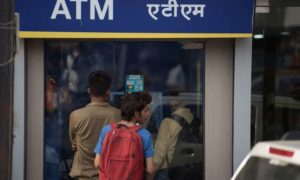Credit card and banking related frauds have been on the rise. Despite the efforts of regulators such as the RBI (Reserve Bank of India), fraudsters have found ingenious ways to cheat unsuspecting individuals. So, what is the liability of the customer in such cases? If you report it within three days, you will have zero liability for the unauthorised transaction. Here is a guide on customer liability for unauthorised credit card transactions.
What is the liability of a customer for such transactions?
A customer is fully liable if the unauthorised transaction happens due to her/his negligence. “In cases where the loss is due to negligence by a customer, such as where he has shared the payment credentials, the customer will bear the entire loss until he reports the unauthorised transaction to the bank,” according to RBI (Reserve Bank of India) guidelines on unauthorised transactions. “Any loss occurring after the reporting of the unauthorised transaction shall be borne by the bank,” RBI said.
Also Read : SBI Har Ghar Lakhpati RD: Who should invest in this SBI Lakhpati RD scheme to get Rs 1 lakh?
If the fraud happens neither due to the negligence of the customer nor due to the bank, the customer will not have to bear it at all if she/he reports the transaction within three days. But if there is a delay of more than three days, the liability of the customer is limited to the transaction value or ₹10000 whichever is lower for credit cards with a credit limit of ₹5 lakh. The liability is limited to the transaction value or ₹25000, whichever is lower, for credit cards with a limit of over ₹5 lakh. But the burden of proving customer liability in case of unauthorised transactions “shall lie on the bank,” the apex bank said.
“Further, if the delay in reporting is beyondseven working days, the customer liability shall be determined as per the bank’s board approved policy. Banks shall provide the details of their policy in regard to customers’ liability formulated in pursuance of these directions at the time of opening the accounts,” RBI said. “Banks shall also display their approved policy in public domain for wider dissemination. The existing customers must also be individually informed about the bank’s policy,” it said.
Also Read : This women savings scheme offers higher interest rate than 2-year bank FD and ends on March 31, 2025
What happens after the unauthorised transaction is reported?
Banks have to reverse the unauthorised transaction within 10 working days from the date of intimation by the customer. “On being notified by the customer, the bank shall credit (shadow reversal) the amount involved in the unauthorised electronic transaction to the customer’s account within 10 working days from the date of such notification by the customer (without waiting for settlement of insurance claim, if any),” RBI said.
Even if the fraud happens due to the negligence of the customer, banks can, at their discretion, waive off liability. “Banks may also at their discretion decide to waive off any customer liability in case of unauthorised electronic banking transactions even in cases of customer negligence. The credit shall be value dated to be as of the date of the unauthorised transaction,” the apex bank stated.
What is the maximum time limit for reversing the transaction?
RBI has said that banks should reverse fraudulent transactions within 90 days. “Banks shall ensure that a complaint is resolved and liability of the customer, if any, established within such time, as may be specified in the bank’s board approved policy, but not exceeding 90 days from the date of receipt of the complaint,” the apex bank said.
If the bank is unable to resolve the complaint within 90 days, the customer liability remains zero if the fraud is reported within three days and is limited to the transaction value or ₹10000 whichever is lower for credit cards with a limit of ₹5 lakh. For credit cards with a limit of over ₹5 lakh, the liability is restricted to the transaction value or ₹25000 whichever is lower. Further, the customer need not have to bear any additional interest burden that arises from the transaction.



































